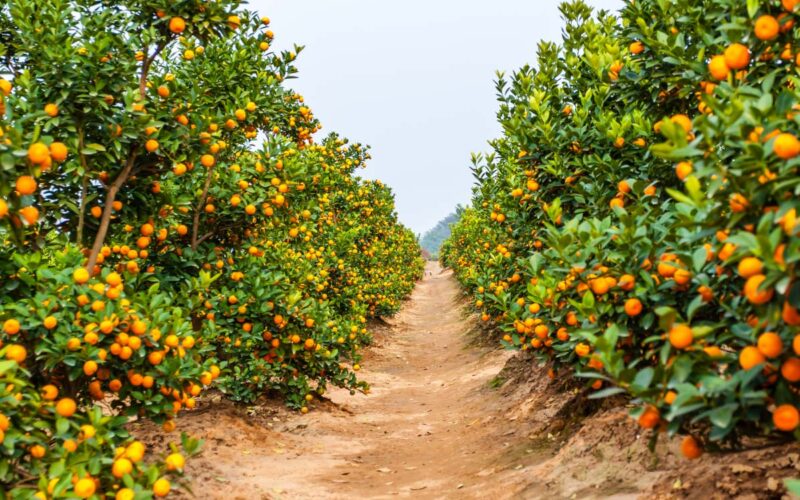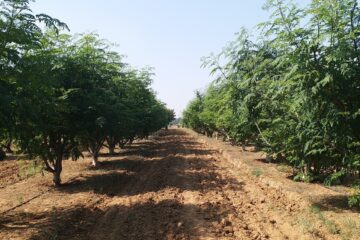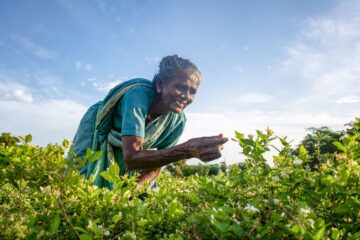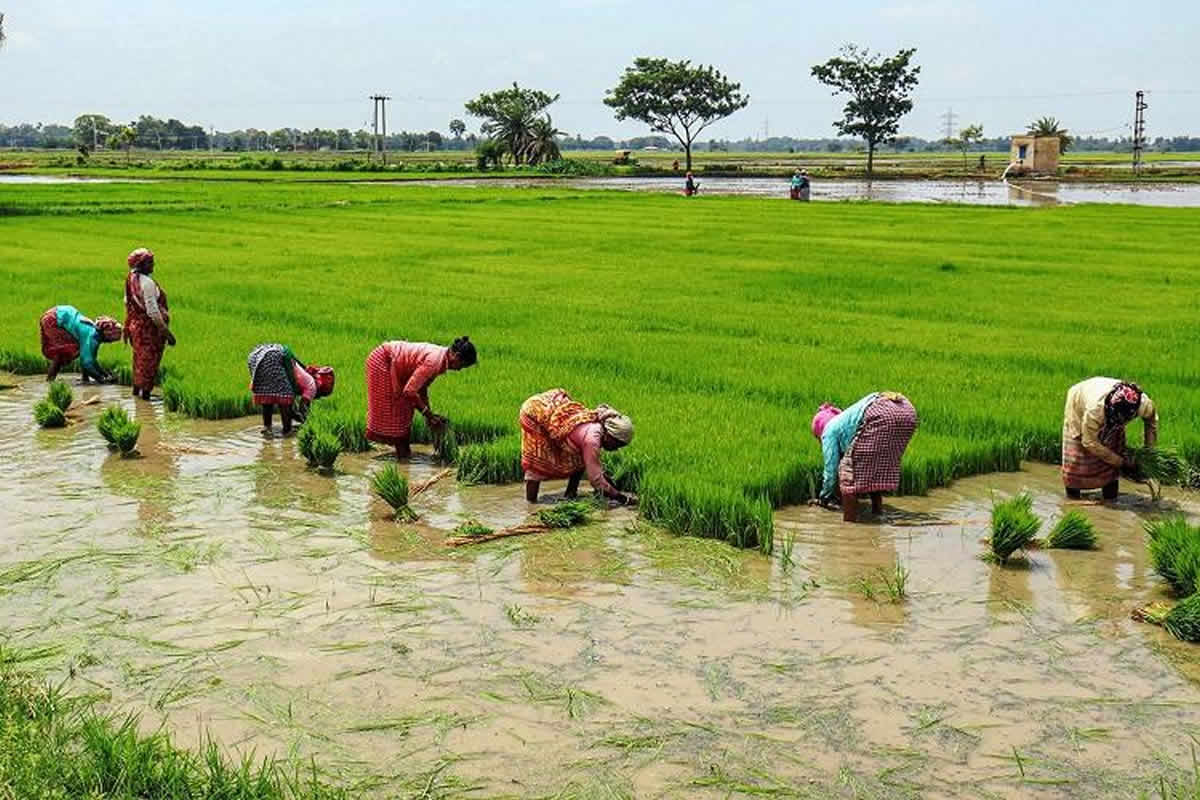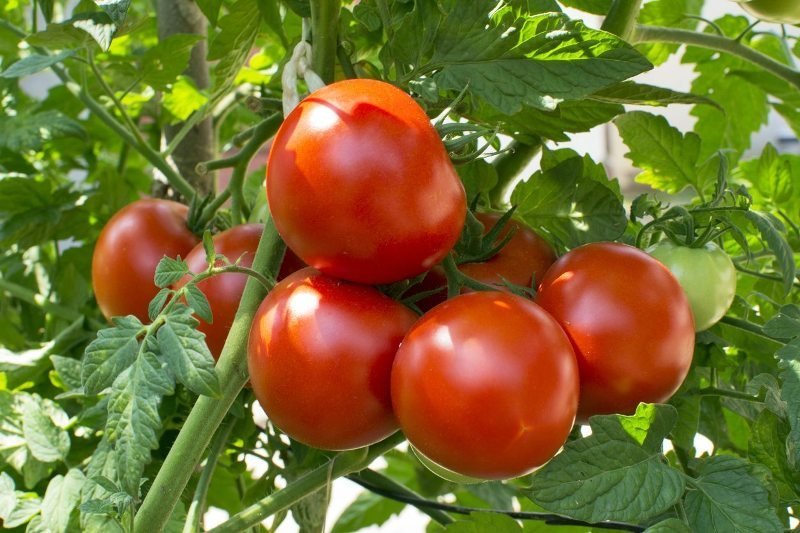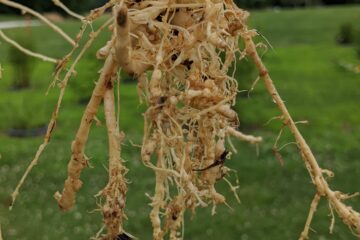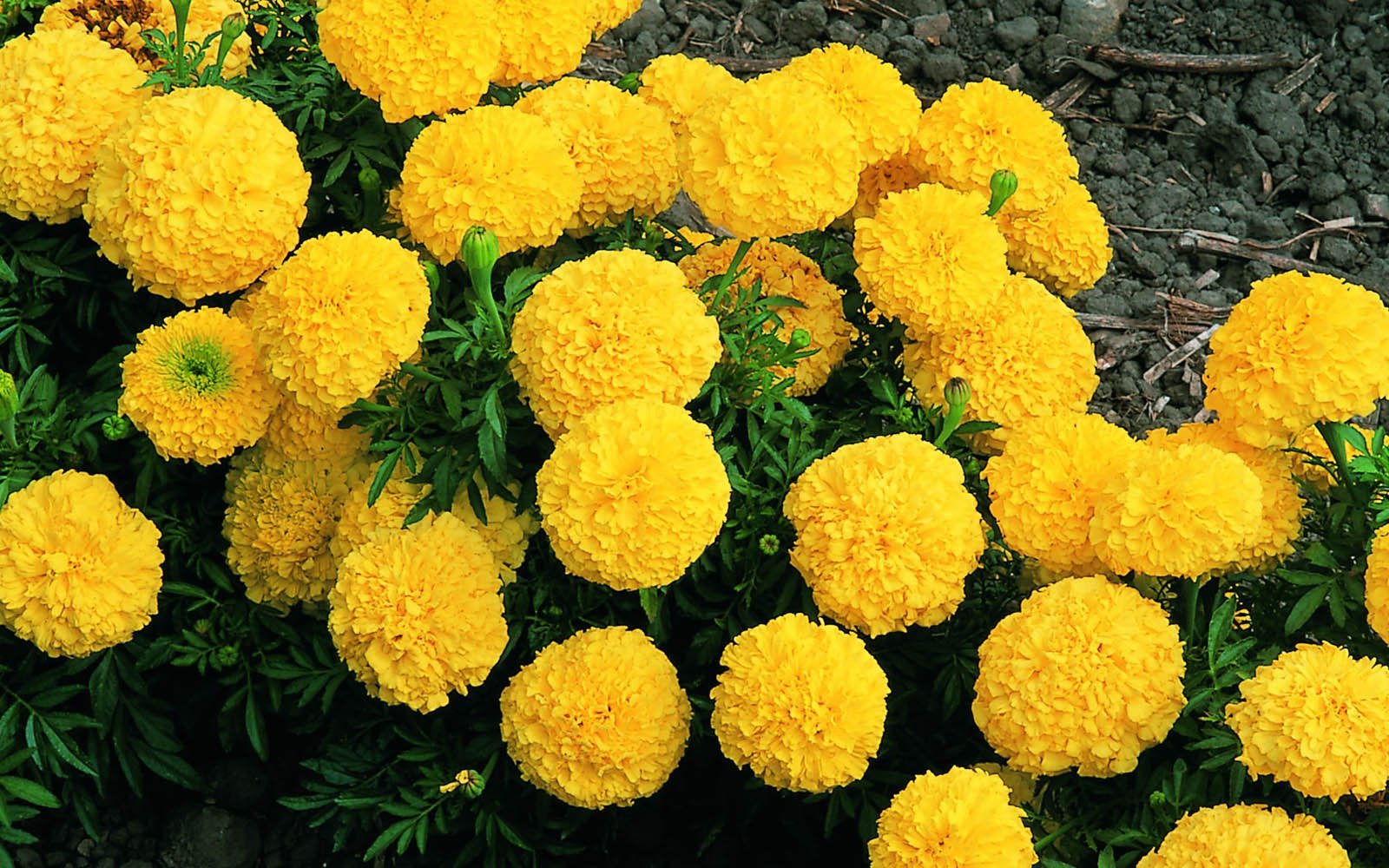Kamala Orange, also known as “Mandarin Orange” in English, has the botanical name Citrus reticulata and belongs to the Rutaceae family. This fruit is well known for its sweet taste and high nutritional value, especially its rich content of Vitamin C.
Regions of Cultivation
In Tamil Nadu, Kamala Orange is predominantly cultivated in the Shevaroy Hills, Lower Palani Hills, and the lower altitudes of the Nilgiris. It is also widely grown in Coorg (Karnataka), Nagpur (Maharashtra), and Darjeeling (West Bengal). Additionally, states like Assam, Meghalaya, Tripura, Manipur, Nagaland, Mizoram, and Arunachal Pradesh are notable for its cultivation.
Varieties
Commonly cultivated varieties include Kodai, Coorg, Kashi, Desi, and Nagpur Santara. High-yield varieties like Nagpur Santra, Darjeeling, Sikkim, Sumitra, Kashi Mandarin, and Kinnow are also popular. The Kashi variety is known for its high yield and moderate growth, with fruit weighing between 140-220 grams and having a smooth orange peel.
Propagation
Seed-grown saplings take about 7-8 years to bear fruit and may not retain the qualities of the parent plant due to cross-pollination. Hence, grafted saplings are recommended for better quality and quicker yield. Rootstocks such as Rangpur Lime, Rough Lemon, and Cleopatra Mandarin are suitable for grafting.
Planting and Cultivation Methods
Kamala Orange can be cultivated either as a monocrop or intercrop, especially with coffee, in regions like the Lower Palani Hills. The recommended spacing for planting saplings is between 5-6 meters. Before planting, the land should be prepared by creating stone boundaries to prevent soil erosion. The pits for planting should be about 75 cm in length, width, and depth.
The ideal months for planting in Lower Palani Hills are June and July. After planting, if there is no rain for the first two days, it is essential to provide irrigation. Young plants should be mulched with dry leaves to prevent rapid evaporation of water.
Water Management
In regions like the Lower Palani Hills, cultivation relies on rainwater, making it important to construct barriers to conserve rainwater for use during the dry season. Subsurface irrigation methods, such as subsurface injectors, can ensure that water reaches the roots effectively. Mulching around the trees helps retain moisture and control weed growth.
Fertilization
Proper fertilization is crucial for the cultivation of Mandarin Oranges. In the first year, apply 10 kg of organic manure, 100 grams of nitrogen, 40 grams of phosphorus, and 50 grams of potassium per tree. The amount of fertilizer should be increased annually. For mature trees, the recommended annual dosage is 1.250 kg of urea, 1.500 kg of superphosphate, and 750 grams of potash.
Pruning and Training
After three years, retain three well-developed branches and remove others to ensure the quality of the fruits and the strength of the remaining branches. Proper training of the trees ensures good airflow and sunlight penetration, making it easier for pest control and harvesting.
Pest and Disease Management
Kamala Orange trees are susceptible to pests like leaf rollers, aphids, and mites, and diseases like root rot and sooty mold. Effective pest control measures include using neem oil sprays and other insecticides. Diseases can be managed by applying fungicides like wettable sulfur and ensuring good orchard hygiene.
Post-Harvest Management
After harvesting, fruits should be handled carefully to avoid injuries, which can lead to fungal infections. To prevent diseases like green mold and blue mold during storage, the fruits should be washed in a chlorine solution and treated with fungicides.
Yield
With proper cultivation practices, Kamala Orange trees begin yielding fruit after 3-5 years from grafting, with an expected annual yield of 8-10 tons per acre. The primary harvest seasons in the Lower Palani Hills are December-January and August-September.
Successful cultivation of Kamala Orange requires meticulous attention to planting, pruning, fertilization, pest management, and post-harvest care. Following these guidelines can ensure a high yield of quality fruits, which are rich in nutrients and highly valued in the market.
Dr. R. Jayavalli, Assistant Professor in the Department of Fruit Science, College of Horticulture and Research Station, Trichy.

